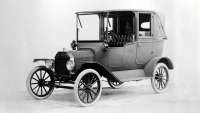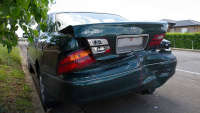We take an inside look at the production line in the Iveco factory in Melbourne.
Have you ever looked at a great big truck and wondered how they managed to build it?
Putting a car together is hard enough, but truck components are so much heavier and bigger. A lot of trucks are also custom made for different customers and that means great complexity at the plant.
We were lucky enough to check out the process at Iveco's factory in Dandenong.
To start with, huge presses crunch steel into the shape of various components which are put to one side.
Long steel chassis rails are fed through a milling machine which drills up to 200 holes per beam for all the bolts and lines, while a plasma cutter is used to slice them to the right lengths.
The amount of hoses and lines is incredible
Workers then attach other chassis members, sub-frames and the engine mounts. At this stage the chassis is upside down. This way, the large and heavy axles can be dropped down on to the chassis, which is sitting on a mobile platform riding on small rails that protrude from the factory floor. An overhead crane does the heavy lifting.
The chassis is then sent through a booth to be spray painted by two workers who look like they are wearing bio-suits, which have in-built oxygen lines.
Now it's time for all the electrical lines and air hoses to be fitted. The amount of hoses and lines is incredible.
Hats off to the workers for not getting any mixed up.
The wheels are then fitted and the chassis is flipped over on to its correct side and the engine and transmission are fitted.
Iveco imports engines from two sources, its own company in Europe and Cummins, which supplies a range of engines including the 15-litre six-cylinder for use in Iveco's largest truck, the Powerstar.
The engines come fully assembled and are placed on trolleys before they are lifted into position with an overhead crane system.
Back in the 1970s and 80s, when Iveco built trucks with petrol engines, workers would also have the job of tuning the carburettors on the line (could you imagine the noise?). These days, the super complex injection systems are preset and workers only need to put the engines on the dyno to check for faults.
On the other side of the factory, which started out as an International truck plant in 1972, workers are assembling the cabs. A few are imported complete from Europe, but most are made at the factory.
The components are quality checked after being stamped.
To guard against rust, all the components are dipped in a pool of special primer paint. An electric charge is run through the liquid, which attracts the paint to all the metal surfaces, including the hard to get at nooks and crannies.
All the components are then welded together by hand. There is limited automation here, and some parts are bolted on.
After about 10 days on the line, the truck is ready to start work
Then the cabin is then painted, baked at 140 degrees and lightly buffed before getting another coat.
Workers then inspect it under a bank of UV lights for any imperfections. It is then carefully lowered onto the chassis and really does resemble a proper truck for the first time.
The dashboard is then fitted with instrument clusters dropped in and all the wiring, cables and tubes are then connected. The steering wheel, carpet and seats are next.
The trucks are then run over a pit and all the fluids are checked before they go through series of tests, including a short drive out on the road to make sure everything is just right. Finally, after about 10 days on the line, the truck is ready to start work.



.jpg)
.jpg)


.jpg)

.jpg)

.jpg)
.jpg)
.jpg)
.jpg)
.jpg)
.jpg)
.jpg)
.jpg)
.jpg)




 copy.jpg)

.jpg)
.jpg)

Comments